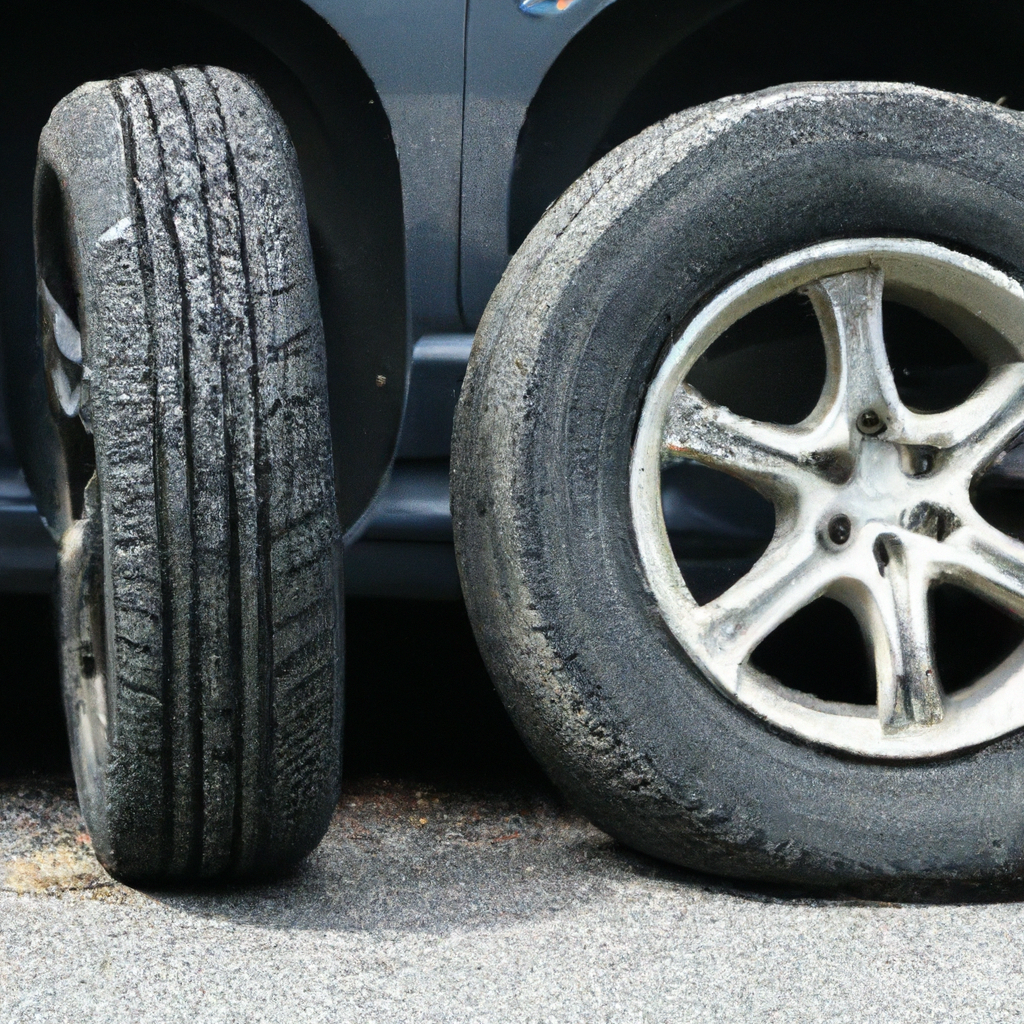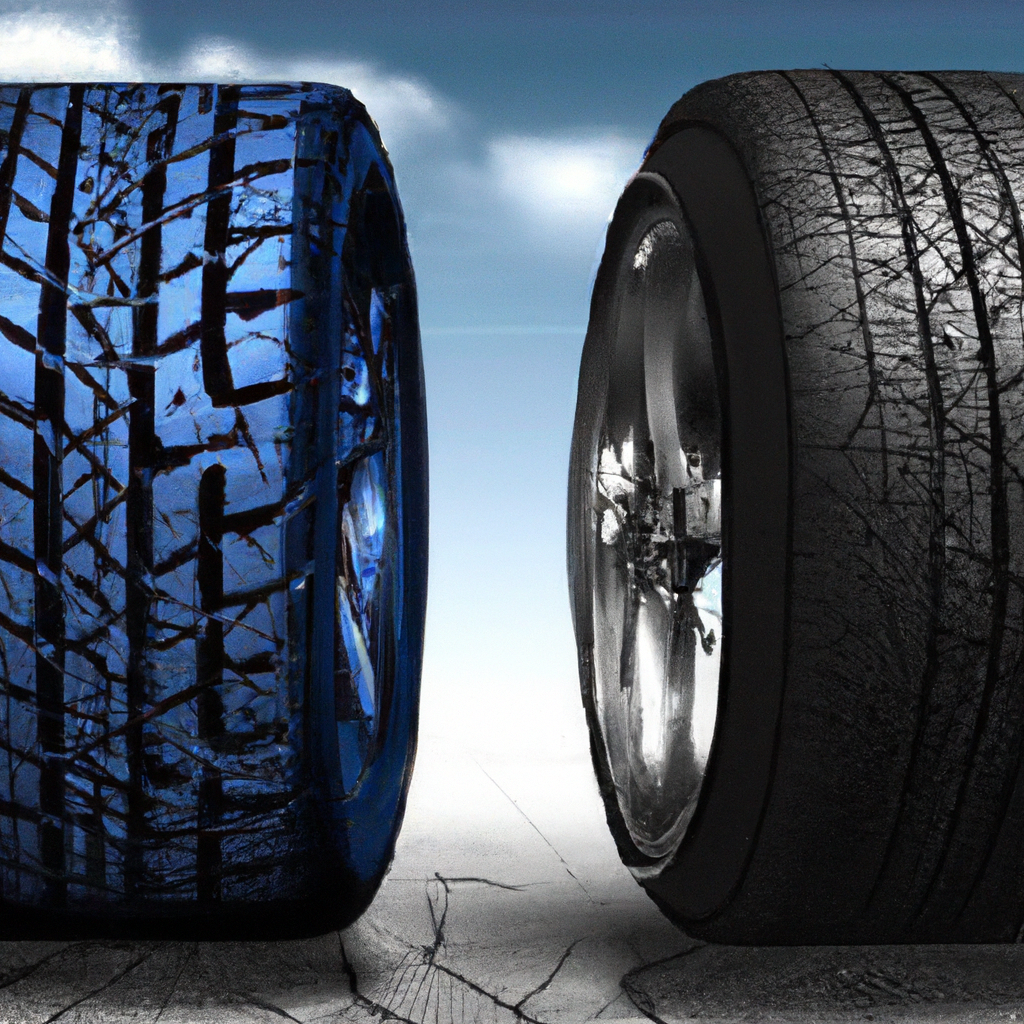Imagine driving along a winding road, feeling the thrill of every turn, when suddenly you hear a loud pop. Your tire has blown out. But wait, you have run-flat tires installed. How do these specialized tires impact your suspension system? In this article, we will explore the effects of run-flat tires on your vehicle’s suspension, shedding light on the importance of understanding this relationship for a smooth and comfortable ride. So, fasten your seatbelt and join us on this informative journey.

Introduction
Welcome to this comprehensive article on how run-flat tires affect the suspension system of your vehicle. As a responsible driver, it’s important to understand the various aspects and implications of using run-flat tires. In this article, we will explore what run-flat tires are, how they work, and the advantages they offer. We will also delve into the effects of run-flat tires on the suspension system, including increased unsprung weight, stiffer ride quality, reduced suspension travel, and their impact on handling and steering. Additionally, we will discuss the implications on load capacity and weight distribution, the importance of a Tire Pressure Monitoring System (TPMS), the cost and maintenance considerations associated with run-flat tires, and their compatibility with suspension components. Lastly, we will touch upon driving on flat run-flat tires, alternative options, and conclude with a summary of the key points covered.
Run-flat Tires Explained
What are run-flat tires?
Run-flat tires, also known as self-supporting tires, are specially designed to allow a vehicle to continue driving even after the tire has been punctured or has lost air pressure. Unlike traditional tires, run-flat tires are constructed with reinforced sidewalls and advanced rubber compounds that support the weight of the vehicle even in the absence of air pressure. This technology provides drivers with the convenience of being able to continue driving for a certain distance at a reduced speed to find a safe place to replace or repair the tire.
How do run-flat tires work?
Run-flat tires rely on the reinforced sidewalls to support the weight of the vehicle when air pressure is lost. The design of these tires allows them to operate with little or no air pressure for a limited distance and speed. The sidewalls provide a structural integrity that prevents the tire from collapsing and allows the rubber tread to maintain contact with the road surface. This technology enables drivers to safely continue their journey, avoiding the need for immediate tire change or repair.
Advantages of run-flat tires
Run-flat tires offer several advantages for drivers. Firstly, they provide a higher level of safety by allowing the vehicle to remain mobile even after a tire failure. This can be particularly beneficial in situations where finding assistance or a safe place to stop immediately might not be possible. Secondly, run-flat tires eliminate the need for carrying a spare tire, saving space and reducing vehicle weight. Finally, run-flat tires provide convenience and peace of mind, allowing drivers to continue their journey and reach their destination without unnecessary interruptions.
Effects on Suspension System
Increased unsprung weight
One of the primary effects of run-flat tires on the suspension system is the increase in unsprung weight. Unsprung weight refers to the mass of the vehicle’s components that are not supported by the suspension system, such as the tires, wheels, and brakes. Since run-flat tires are designed with reinforced sidewalls, they tend to be heavier than conventional tires. This additional weight affects the performance and responsiveness of the suspension system, potentially leading to a decrease in ride quality and handling.
Stiffer ride quality
Another consequence of using run-flat tires is that they often result in a stiffer ride quality. This is primarily due to the reinforced sidewalls and advanced rubber compounds used in their construction. While these features allow the tires to support the weight of the vehicle when deflated, they also lead to a reduction in the tire’s ability to absorb road impacts and vibrations. As a result, drivers may experience a harsher and less comfortable ride compared to vehicles equipped with conventional tires.
Reduced suspension travel
Run-flat tires can also lead to a reduction in suspension travel. Suspension travel refers to the distance a wheel can move up and down within its range of motion. Since run-flat tires have stiffer sidewalls, they have less elasticity compared to traditional tires. This reduced elasticity limits the suspension system’s ability to contour to road irregularities, resulting in less effective shock absorption. Consequently, the vehicle may transmit more vibrations and forces directly to the chassis, potentially compromising comfort and handling.
Impact on handling and steering
The use of run-flat tires can have an impact on the handling and steering characteristics of a vehicle. The increased unsprung weight, stiffer ride quality, and reduced suspension travel can collectively affect the vehicle’s dynamics. Run-flat tires may decrease the vehicle’s responsiveness and compromise its ability to corner and maneuver precisely. Additionally, the stiffer sidewalls of run-flat tires may result in a loss of grip and traction, especially in wet or slippery conditions. It is important for drivers to be mindful of these factors and adjust their driving accordingly when using run-flat tires.
Load Capacity and Weight Distribution
Run-flat tires’ impact on load capacity
Run-flat tires can have an impact on the load capacity of a vehicle. The additional weight of the reinforced sidewalls and the design of run-flat tires can limit the maximum load a tire can handle compared to conventional tires. It is important to consult the manufacturer’s guidelines and ensure that the load capacity of the run-flat tires is suitable for the vehicle and any additional cargo or passengers.
Effect on weight distribution
Due to the increased unsprung weight of run-flat tires, they can potentially affect the weight distribution of the vehicle. Weight distribution plays a crucial role in ensuring balanced handling and stability. The added weight from the run-flat tires may cause a shift in the vehicle’s center of gravity, leading to changes in the vehicle’s dynamics. It is important to take into account the impact on weight distribution when using run-flat tires and make any necessary adjustments to maintain optimal vehicle performance.

Tire Pressure Monitoring System
Importance of TPMS with run-flat tires
A Tire Pressure Monitoring System (TPMS) becomes even more critical when using run-flat tires. TPMS is designed to monitor the air pressure within the tires and alert the driver of any significant deviations from the recommended pressure. With run-flat tires, it is crucial to remain aware of the tire pressure since there may be no visible signs of deflation until the tire reaches a critical condition. TPMS ensures that drivers are promptly notified of any changes in tire pressure, allowing them to take appropriate action and avoid potential tire failure.
TPMS functionality with run-flats
TPMS for run-flat tires operates similarly to TPMS in vehicles with conventional tires. The system continuously monitors the tire pressure and sends signals to the vehicle’s dashboard, indicating if any tire is underinflated or experiencing pressure deviations. The TPMS for run-flat tires is calibrated to account for the specific characteristics and pressure ranges of these tires. It is important to regularly check and calibrate the TPMS as recommended by the manufacturer to ensure accurate readings and reliable performance.
Cost and Maintenance Considerations
Higher cost of run-flat tires
One aspect to consider when opting for run-flat tires is the higher cost associated with these specialized tires. The advanced technology, reinforced sidewalls, and specific manufacturing processes make run-flat tires more expensive compared to conventional tires. However, it is important to remember the added safety and convenience they provide, and weigh the cost against the benefits you desire from using run-flat tires.
Replacement and repair challenges
The replacement and repair process for run-flat tires can present some challenges. Due to their unique construction, run-flat tires may require specialized tools and techniques for removal and installation. Additionally, not all tire shops may stock run-flat tires, limiting the available options for replacement. It is essential to verify the availability and expertise of tire shops in your area before opting for run-flat tires to ensure that you have access to the required services.
Regular inspections and maintenance
To ensure the optimal performance and longevity of run-flat tires, regular inspections and maintenance are crucial. It is recommended to check the tire pressure frequently and keep it within the manufacturer’s recommended range. Run-flat tires should also be visually inspected for any signs of damage or wear, and replaced if necessary. Following the manufacturer’s guidelines for maintenance and rotation is essential to maximize the lifespan of run-flat tires and maintain the safety and performance of the vehicle.

Compatibility with Suspension Components
Compatibility with shocks and struts
Compatibility between run-flat tires and suspension components is an important consideration. The stiffer ride quality of run-flat tires can potentially increase the stress on shocks and struts. These components play a critical role in absorbing shocks and vibrations, and excessive stress can lead to accelerated wear and reduced performance. It is crucial to ensure that the suspension components are capable of handling the demands imposed by the stiffer sidewalls and reduced elasticity of run-flat tires.
Effect on suspension geometry
The use of run-flat tires can have an impact on the suspension geometry of the vehicle. The altered weight distribution and changes in ride height resulting from run-flat tires may affect the suspension system’s geometry. These changes can potentially affect the alignment, camber, and caster angles, leading to inconsistent tire wear and compromised handling. It is important to consult with a qualified professional or a trusted mechanic to evaluate the compatibility of run-flat tires with the suspension geometry of your vehicle and make any necessary adjustments.
Potential for increased wear on components
The unique characteristics of run-flat tires can potentially lead to increased wear on various suspension components. The stiffer ride quality and reduced suspension travel may put additional stress on components such as control arms, bushings, and wheel bearings. This increased stress can accelerate wear and require more frequent inspections and maintenance. Regularly monitoring the condition of these components and addressing any signs of wear or damage promptly is essential to ensure the safe and optimal performance of the suspension system.
Driving on Flat Tires
Can you drive on run-flat tires when flat?
One of the significant advantages of run-flat tires is the ability to continue driving even when the tire is flat. However, it is important to recognize that this capability is limited and comes with certain restrictions. Most run-flat tires are designed to provide a safe driving distance at a reduced speed, typically up to 50 miles. It is crucial to consult the manufacturer’s guidelines and adhere to the recommended driving speed and distance when using run-flat tires on a flat tire.
Safety considerations
While run-flat tires enable you to continue driving on a flat tire, it is essential to prioritize safety. As the tire deflates, the handling and stability of the vehicle may be compromised, requiring you to adjust your driving accordingly. It is crucial to maintain a reduced speed, avoid sudden maneuvers, and gradually bring the vehicle to a stop in a safe location. Additionally, it is not recommended to drive on run-flat tires for an extended period or at excessively high speeds, as this can further compromise their performance and safety.
Recommended driving speed and distance
The specific driving speed and distance recommendations for run-flat tires when flat can vary depending on the tire manufacturer and model. It is essential to consult the manufacturer’s guidelines to determine the suitable speed and distance for your specific run-flat tires. As a general guideline, staying within a speed range of 30-50 miles per hour and limiting travel distance to approximately 50 miles is advisable. Adhering to these recommendations ensures the safety of both you and your vehicle.

Alternative Options
Non-run-flat tire alternatives
If the potential drawbacks and considerations associated with run-flat tires do not align with your preferences or requirements, non-run-flat tire alternatives can be considered. Conventional tires provide a broader range of options in terms of ride quality, performance, and cost. With non-run-flat tires, it is important to have a functional spare tire and the necessary tools to address a flat tire situation promptly. It is also advisable to consult with a tire specialist to determine the most suitable non-run-flat tire option for your vehicle and driving needs.
Aftermarket suspension modifications
For drivers seeking to enhance the performance and comfort of their vehicles, aftermarket suspension modifications can be explored. By upgrading components such as shocks, struts, and springs, the ride quality, handling, and overall suspension performance can be improved. However, it is crucial to consult with experienced professionals and ensure compatibility with the vehicle’s specifications and requirements. Aftermarket suspension modifications offer more flexibility and customization options but must be approached with careful consideration and expert guidance.
Conclusion
In conclusion, run-flat tires provide an innovative solution for addressing tire failures and maintaining mobility in case of a flat tire. However, it is essential to be aware of the effects they can have on the suspension system of your vehicle. Run-flat tires increase unsprung weight, result in a stiffer ride quality, reduce suspension travel, and impact handling and steering. They also affect load capacity, weight distribution, and the compatibility of suspension components. The use of run-flat tires necessitates a functioning Tire Pressure Monitoring System (TPMS), regular inspections, and maintenance. It is also important to be knowledgeable about driving on flat run-flat tires and explore alternative options if the drawbacks do not align with your requirements. With careful consideration and understanding, you can make an informed decision about whether run-flat tires are the right choice for your vehicle and driving needs.


